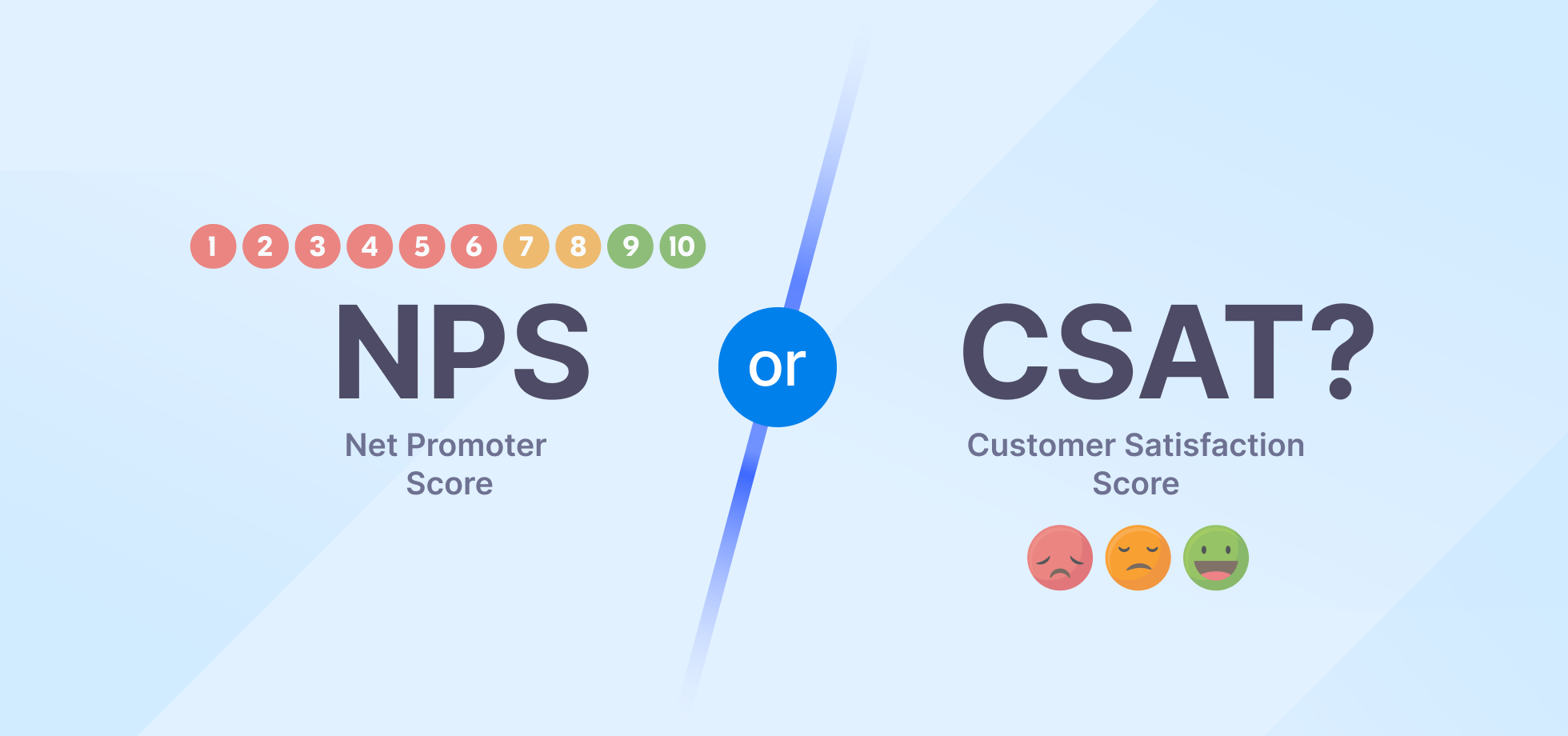
In the crowded world of email communications, where important messages often get lost, ignored, or mislabeled as spam, the need for a more reliable method of transactional communication is evident.
This is where dedicated transactional SMS services come into play. They offer businesses a direct and effective way to reach customers without the clutter, ensuring essential information is delivered and seen promptly.
What is transactional SMS?
A transactional SMS is an automated text message sent by organizations to facilitate customer interactions and support throughout various stages of the customer lifecycle. Key examples of transactional SMS include order confirmations, welcome messages, and updates on shipping.
Due to its direct, fast, and reliable nature, a transactional A2P text, especially when deployed as transactional bulk SMS, plays an essential role in modern business communication strategies.
This effectiveness is further underscored by the ability of transactional SMS to bridge the gap between businesses and customers, ensuring a seamless flow of information that is both accessible and immediate.
Transactional SMS vs. promotional SMS
Transactional SMS refers to automated text messages sent by companies to provide customers with necessary and helpful information related to their transactions or interactions with the company.
These messages are strictly informational. Unlike promotional SMS, transactional SMS is not used for marketing purposes but to facilitate a smoother customer experience by informing individuals about their service-related transactions.
On the other hand, promotional SMS is utilized by companies for marketing purposes, aiming to promote products, services, or events to potential and existing customers.
These messages are designed to engage the audience with special offers, discounts, new product launches, and event invitations, encouraging recipients to take action, such as making a purchase or participating in a promotion. In contrast to transactional SMS, promotional SMS seeks to boost sales and increase brand awareness through targeted advertising campaigns.
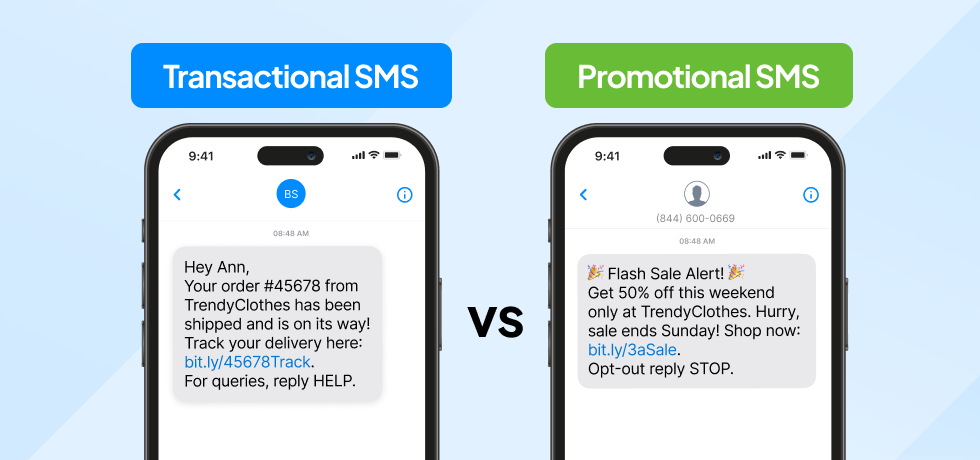
While they both serve different purposes within the spectrum of business communication, each plays a vital role in engaging customers but targeting different outcomes. Here’s a comparative overview:
| Feature | Transactional SMS | Promotional SMS |
|---|---|---|
| Purpose | To relay essential information related to transactions or services. | To market or promote products, services, or events. |
| Content | Order confirmations, shipping notifications, reminders, account alerts. | Special offers, discounts, product launches, event promotions. |
| Audience | Customers with a pre-existing relationship. | Potential and existing customers, often segmented. |
| Regulations | Exempt from strict marketing regulations, can be sent anytime. | Subject to consent requirements and restrictions on timing. |
| Timing | Can be sent 24/7 for immediate information delivery. | Sent during appropriate hours, respecting consent and local laws. |
| Objective | To inform and provide updates, enhancing customer service. | To engage and drive action, boosting sales and brand awareness. |
Key features of transactional SMS
Transactional SMS services come equipped with various features designed to enhance communication between businesses and their customers. These include:
- Instant delivery: Transactional SMS is known for delivering messages almost instantaneously, ensuring timely customer updates.
- High open rate: Transactional SMS has one of the highest open rates among communication channels, ensuring that the recipients see critical information.
- 24/7 operation: Unlike promotional SMS, which may be restricted to certain hours, transactional messages can be sent and received anytime, making them ideal for urgent updates.
- Personalization: These messages can be personalized with the recipient’s name, account details, or specific transaction information, enhancing the customer experience.
- Automation and integration: Transactional SMS can be automated and integrated with business systems (CRM, ERP, etc.) for real-time notifications triggered by specific customer actions or events.
- Global reach: They can be sent to virtually any mobile phone worldwide, ensuring customers receive important information regardless of their location.
- Reliability: Transactional SMS services often come with high reliability and uptime, ensuring messages are delivered even during high traffic volumes.
- Secure communication: They provide a secure channel for sending sensitive information, such as account alerts or password resets, directly to the customer’s phone.
- Compliance and opt-out management: Transactional text messages are generally compliant with global communication laws and regulations. Transactional SMS providers typically manage opt-out requests automatically, maintaining compliance without manual intervention.
- Delivery reports and analytics: Businesses can access delivery reports and analytics to monitor the success rate of their messages and make informed decisions based on customer interactions.
Benefits of transactional SMS for businesses
Transactional SMS offers a direct and efficient way for businesses to communicate critical information to customers. Here are its key benefits:
- Improved customer satisfaction: Providing timely and relevant information keeps customers informed and appreciative of the transparency.
- Increased engagement: Maintaining continuous communication builds a stronger relationship, fostering loyalty and encouraging repeat business.
- Efficiency and cost-effectiveness: Automating transactional messages frees up resources and reduces costs associated with customer service operations.
- Enhanced security: Offering a secure channel for sensitive communications, especially in industries like banking and healthcare, ensures customer trust and compliance with privacy regulations.
- Feedback collection: Utilizing transactional SMS to gather immediate customer feedback post-transaction offers valuable insights for continuous service improvement.
Use cases for transactional messages
Transactional SMS serves a wide array of purposes across various industries, enhancing customer interaction, and streamlining business operations. Here are some use cases demonstrating the versatility and effectiveness of transactional text messages:
Order confirmations
E-commerce platforms send SMS messages to confirm orders, providing customers with a summary of their purchase and an order number for future reference.
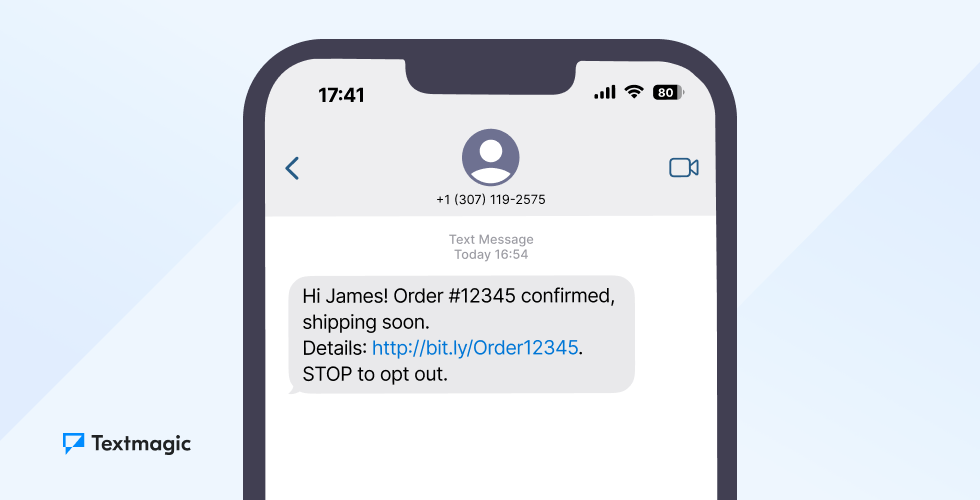
Shipping updates
Retailers and logistics companies use transactional SMS to inform customers of their order’s shipping status, including dispatch notifications, tracking numbers, and delivery confirmations.
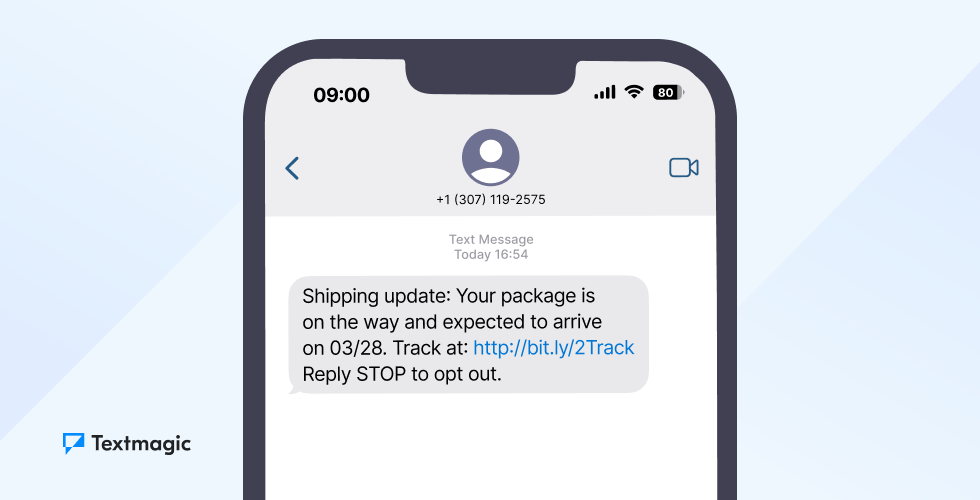
Appointment reminders
Healthcare providers, salons, and service-oriented businesses send reminders for upcoming appointments, reducing no-show rates and ensuring a smooth schedule.
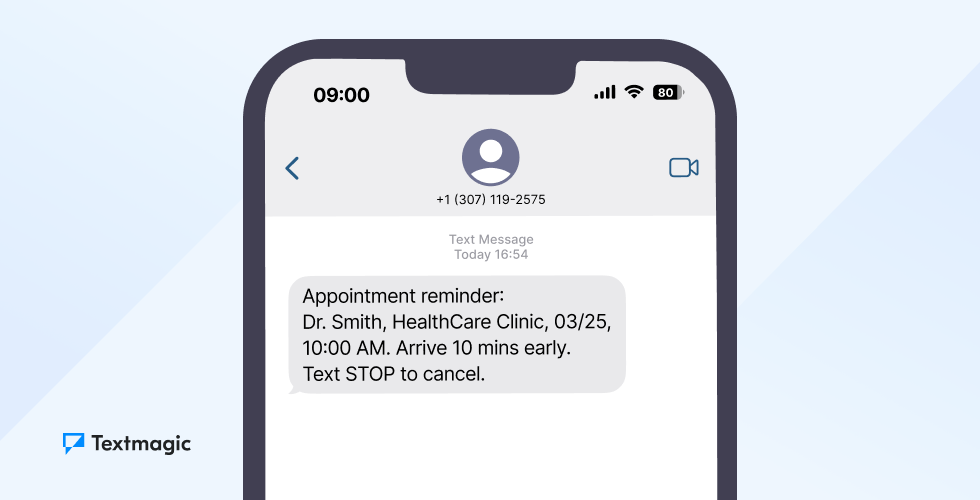
Payment alerts
Banks and financial institutions send SMS notifications for successful transactions, due payments, and account balance updates, helping customers manage their finances better.
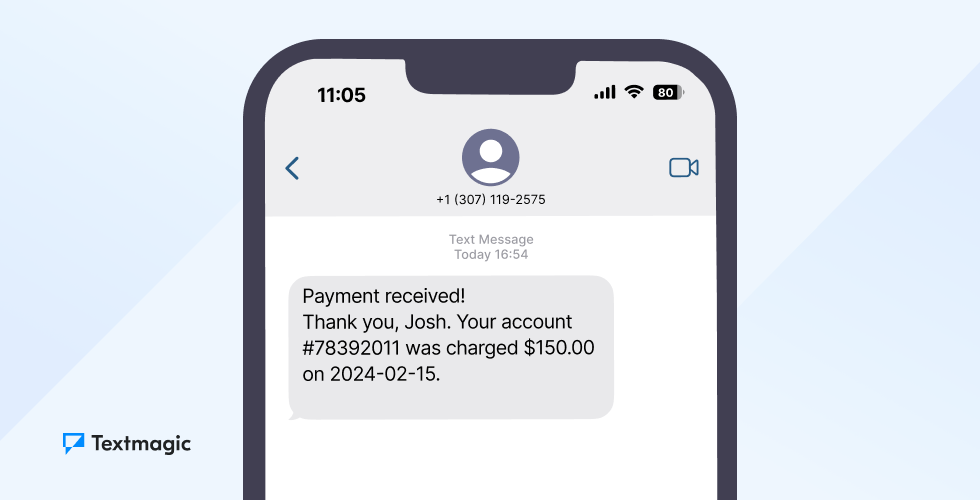
Two-factor authentication (2FA)
Companies enhance account security by sending a one-time passcode via SMS as part of a two-factor authentication process, ensuring safe and secure access.
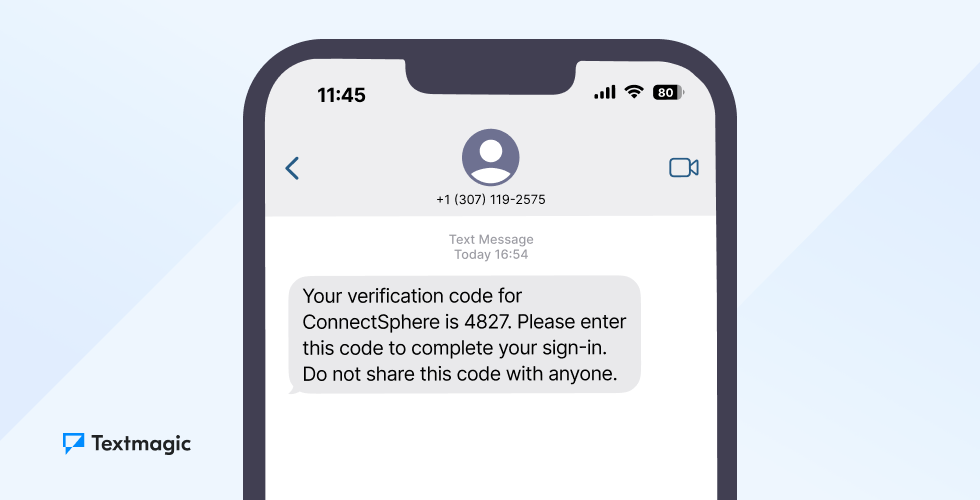
Account activation
Various online platforms send SMS messages containing activation links or codes to new users to verify their account registration and activate their accounts.
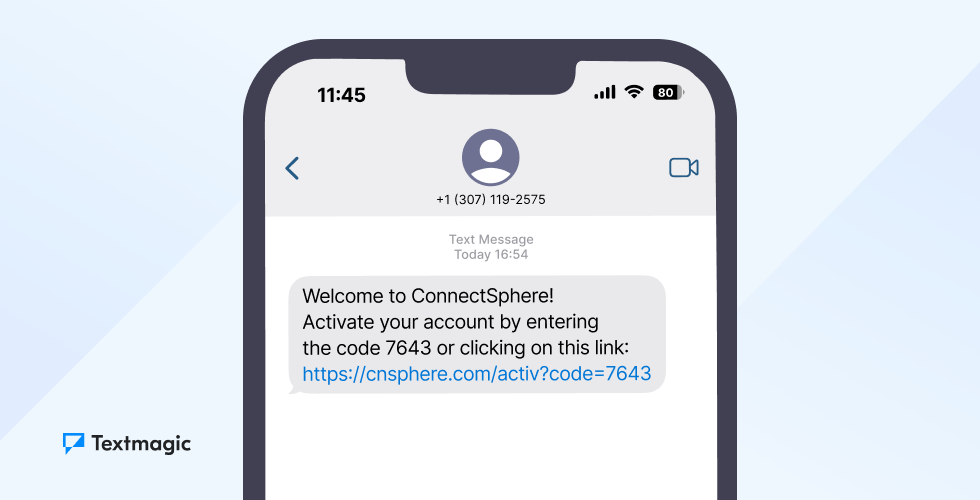
Flight status updates
Airlines keep passengers informed about flight schedules, gate changes, and delays through timely SMS notifications, improving the travel experience.
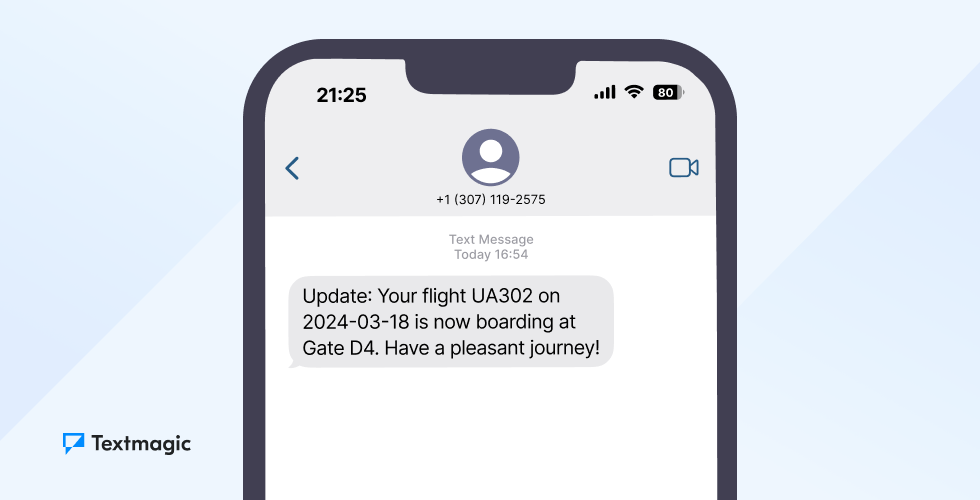
Emergency alerts
Government agencies and institutions use transactional SMS to broadcast urgent public safety messages, such as weather warnings, evacuation notices, or health advisories.
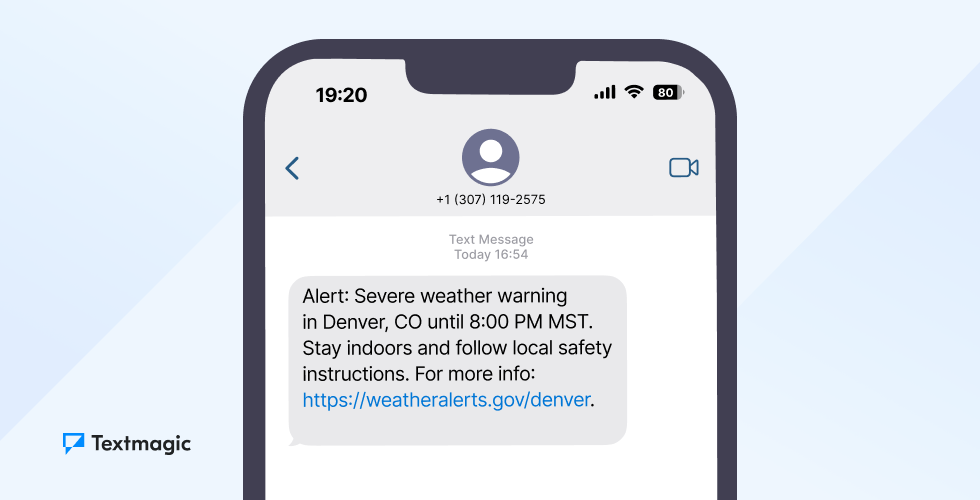
Customer support
Businesses offer SMS as a channel for customer service, allowing customers to receive support and resolve issues directly through text messaging.
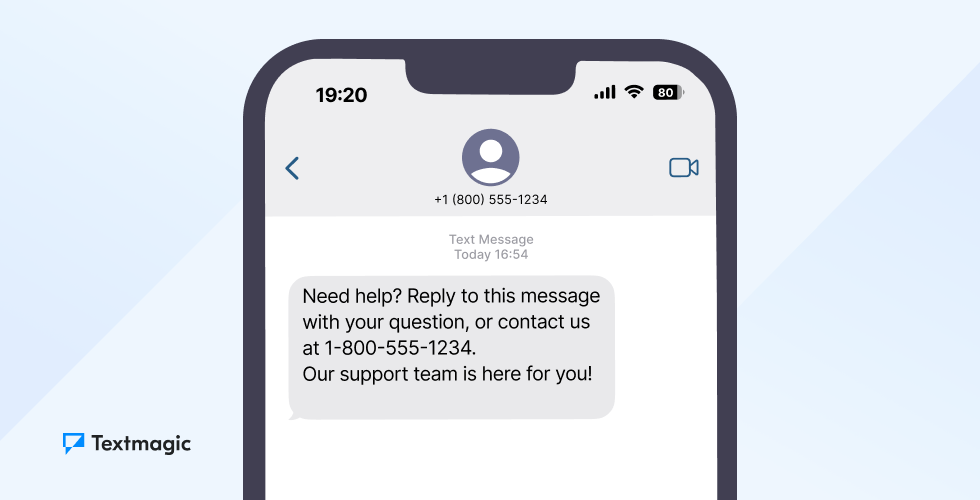
Feedback surveys
After a purchase or service experience, companies send SMS with links to customer satisfaction surveys, encouraging feedback that can inform improvements.
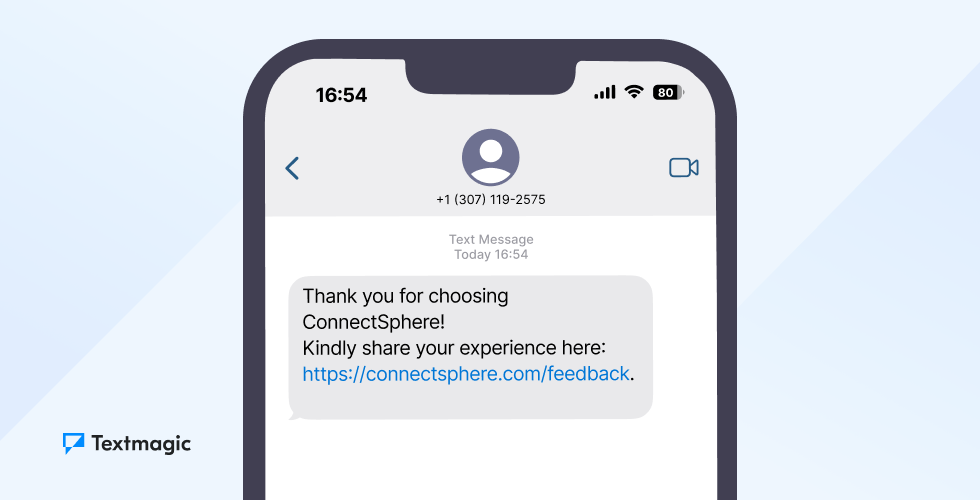
Best practices for implementing transactional texts
Implementing transactional texts effectively is pivotal for businesses focused on improving customer communication and operational efficiency. The integration of a transactional SMS API plays a critical role in this process. Here’s a guide to ensure successful deployment:
Be compliant with telecommunications regulations
- Understand local laws: Familiarize yourself with the telecommunications regulations specific to your region, such as the TCPA in the United States or GDPR in Europe, which dictate consent requirements and privacy protections.
- Obtain consent: Always secure explicit consent from customers before sending transactional texts. This not only aligns with legal requirements but also builds trust with your audience.
- Provide opt-out options: Ensure each message includes a clear way for recipients to opt out of future communications, maintaining compliance and respecting customer preferences.
Maintain message clarity and conciseness
- Be direct: Use straightforward language to convey your message. Avoid jargon or ambiguous terms that could confuse recipients.
- Keep it short: Transactional texts should be brief, focusing on delivering essential information without unnecessary fluff. Aim for messages that are easy to read at a glance.
- Use a clear CTA: If action is required from the recipient, make this clear by including a concise call-to-action.
Personalize your texts
- Leverage customer data: Use available customer data to personalize messages, whether it’s addressing recipients by name or referencing specific details of their transactions.
- Segment your audience: Tailor messages based on customer segments to ensure relevance. This could mean varying the content based on the recipient’s purchase history, location, or preferences.
- Enhance customer experience: Use personalization to make customers feel valued and improve their overall experience with your brand.
Leverage business systems integration
- Automate where possible: Connect your transactional texting platform with your CRM, ERP, or other business systems to automate the sending of texts based on specific triggers or actions.
- Ensure real-time synchronization: Integration should allow for real-time data exchange, ensuring messages reflect the most current information, such as order status or account changes.
- Monitor and analyze: Use the analytics tools provided by your texting platform to track the performance of your transactional messages. This data can inform adjustments to timing, content, and segmentation strategies for improved effectiveness.
How to send transactional SMS with Textmagic?
Sending transactional messages with Textmagic involves a straightforward process that allows businesses to efficiently communicate important information to their customers. Here’s a step-by-step guide on how to send transactional SMS using our platform:
- Sign up for an account: If you haven’t already, sign up for an account on Textmagic and follow the registration process.
- Access your dashboard: Once logged in, navigate to your Textmagic dashboard. This is where you’ll manage your SMS campaigns, contacts, and settings.
- Create a new text message: Look for a button or link to send a new message. In our dashboard, you’ll find options like “Compose” or “New Message.”
- Select your recipients: Add recipients to your message by typing in their phone numbers or selecting contacts from your saved lists. With Textmagic, you can also use groups or upload contacts in bulk if you’re sending messages to multiple recipients.
- Compose your text: Write your transactional SMS message. Remember, this should be clear, concise, and contain all necessary information related to the customer’s transaction or service interaction, such as order confirmations, shipping updates, or appointment reminders.
- Set sending options: Some transactional messages may need to be sent immediately, while others might be scheduled for a later time. Textmagic allows you to choose when your message will be sent. Ensure you select the appropriate option based on the urgency and relevance of the information.
- Review and send: Before sending your message, review it to ensure accuracy in the text and recipient details. Once everything looks good, click the “Send” button.
- Track delivery and responses: After sending your transactional SMS, you can use Textmagic’s reporting and analytics features to track delivery rates, read receipts, and any responses you may receive. This information can help you adjust and improve future communications.
- Automate transactional messages: For regular transactional communications (like appointment reminders or order confirmations), consider setting up automation. This can often be done by integrating Textmagic with your CRM or order management system via API, allowing for real-time, automated sending of transactional SMS based on specific triggers.
Best transactional SMS templates
Each of the following templates can be customized to fit your specific business needs and communication style, ensuring that your messages are both personal and effective.
Account activation
Welcome to [Service/Platform], [Name]! Activate your account by using this code: [Activation Code]. Enjoy our services!
Password reset
You’ve requested to reset your password. Use this code to proceed: [Reset Code]. If you didn’t request this, please ignore this message.
Delivery status update
[Company]: Your order #[OrderID] is out for delivery today. Expect it to arrive between [Time Window]. Any questions? Reply to this message.
Booking confirmation
Your booking at [Venue/Service] is confirmed for [Date] at [Time]. For changes or cancellations, contact us at [PhoneNumber].
Subscription renewal reminder
Hi [Name], your subscription with [Service/Platform] will renew on [Renewal Date]. No action is needed, but you can manage your subscription at [URL].
Service outage notification
Important: [Service/Platform] is currently experiencing an outage. We’re working to resolve this and will update you as soon as normal service resumes.
Customer satisfaction survey
Thank you for choosing [Company]! We’d love to hear about your experience. Please rate us [Link] – it only takes a minute. Thank you!
Event reminder
Don’t forget, [Event Name] is happening on [Date] at [Time]. Check your email for details or visit [URL] for more info. See you there!
Loyalty program update
Exciting news, [Name]! You’ve earned [Points] loyalty points with [Company]. Redeem them on your next purchase or service! Check out your options: [URL]
Credit alert
[Bank/Financial Service]: A credit of [Amount] has been applied to your account on [Date]. For details, log in to your account or contact us.
Conclusion
Transactional SMS stands out as a highly efficient and direct channel for businesses to communicate important information to their customers. By cutting through the noise of crowded email inboxes, it ensures timely delivery of crucial updates such as order confirmations, shipping notifications, and appointment reminders.
With its unparalleled open and response rates, transactional SMS not only enhances customer experience but also fosters a more immediate and reliable connection between businesses and their clientele. As companies continue to seek ways to improve their communication strategies, the role of transactional SMS in achieving these goals becomes increasingly indispensable.
Frequently Asked Questions (FAQs)
Transactional SMS must comply with regulations like the TCPA in the U.S., which require prior express consent from recipients. Messages should be non-promotional, provide essential information, and include clear identification of the sender.
Additionally, they must offer an opt-out option and be sent only to users who have agreed to receive this type of messages.
Transactional SMS delivers essential, time-sensitive information related to a user’s interaction with a service, such as order confirmations or account alerts.
Promotional SMS, on the other hand, aims to market products or services and requires explicit opt-in consent from recipients.
The primary goal of a transactional message is to provide users with critical information regarding their transactions or account activities, ensuring transparency and enhancing user experience.
Yes, One-Time Password (OTP) messages are a type of transactional SMS. They are used for verifying user identities during processes like logins or transactions, providing an added layer of security.
Yes, Textmagic supports sending transactional SMS. You can automate messages such as order confirmations, alerts, and OTPs, ensuring timely and reliable communication with your customers.
Related articles
20 Contact segmentation ideas to save hours on follow-ups
Segments in Textmagic help you skip the repetitive w...
CSAT vs. NPS: Which is a better indicator of customer satisfaction?
The long-debated question regarding customer satisfa...
Omnisend vs. Textmagic: Which platform is right for your business?
To build genuine customer relationships, businesses ...
4 Nutshell CRM integrations with Textmagic & Zapier
Discover 4 powerful Textmagic and Nutshell CRM integ...
What is SMS OTP (One-Time Passcode) verification?
Learn how SMS OTP works and why it's become a crucia...

